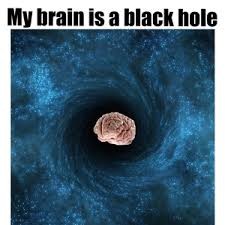Perthblog
Can gravitational wave detectors read human thoughts?

Just been reading a couple of books about human consciousness (Douglas Hofstadter “I am a Strange Loop and Dan Dennett, From Bacteria to Bach). What’s the bottom line? In a word we still don’t have a clue how the brain really works and what consciousness actually is. Hmmm.
Notwithstanding, we smart-alec little pieces of terrestrial carbon, as of very recent times, can actually detect gravitational waves, the ones predicted by Mr. Einstein so many years ago (what is LIGO?). We can even pick up the waves from collisions of black holes untold distances and time away. It’s an amazing thing. But of course, the science is only going to get better. Who needs the new Coke Zero Sugar?
Now I’m not against seeing black hole collisions in 4-D. And I don’t begrudge even paying more money for the privilege even though I know it competes with money for Medicaid and climate change. But I wonder if we can also leverage the amazing technology for something a little bit more human-centric, in the here and now. To wit, I wonder if we can use this on ourselves.
Here’s my train of thought. We now have behavioral scientists using MRI to see which areas of the brain light up under different stimuli. A noble pursuit no doubt. But it’s like using a steam hammer to crack a nut. Even if we can see individual neurons firing, we don’t really know what they’re actually thinking.
Our brains are a frenzy of electrical (and chemical) activity. Number 1, I'm very disappointed about the current state of behavioral science. At any given moment there’s trillions of events going on in our brain. Generating infinitesimal electrical signals and an uncountable number of thoughts. If we can detect gravitational waves a few universes distant, can’t we make use of the same or similar technology to read our own thoughts?
Let’s see; we could read the electrical signals remotely using gravitational wave technology. We could add in some of the amazing big Data tech from the Large Hadron Collider to sort out the wheat from the chaff. We could add in some quantum processing to get over the problem of entanglement between photons in the brain.
Yeah, I know. Gravitational waves are infinitesimally small and are totally different from electrical signals emitted by the brain which are also infinitesimally small, although not in the same league as gravitational waves. They’re different animals. I get it. So make them the same, why don’t you?
Now I am sure that there will be people who read this and say I don’t know what I’m talking about. They’re absolutely right, I don’t have a clue. So my challenge is, for the people who do know what they’re talking about; go and do it then. You know, lead, follow or get out of the way.
Why would I or anyone else want to read human thoughts? As I said, the current state of behavioral science is underwhelming. I think the experiments are often crude and too broad-brush. Much of modern psychology has reached an intellectual dead-end, with its practitioners rehashing the same ideas and theories from a century ago.
And I’m sure that there will be people who don’t want to be able to read human thoughts because of the potential abuse of the technology. They’re right. But that’s not going to stop the technology being developed, just like the potential for abuse is not going to stop the rapid onward march of gene editing a la CRISPR and beyond.
I’m passionate about the good uses of reading human thought and thinking. To find solutions to mental health, psychosis and depression for one; to be able to allow mentally disabled and locked-in victims to communicate freely with others; to plumb the human psyche for more of its amazing secrets and its bountiful gifts; to allow a totally new kind of exploration within us to match the totally new types of exploration outside.
So laugh all you like at my silly idea. It will happen although almost not certainly with the techniques I am positing.
Probably quite soon.
When you subscribe to the blog, we will send you an e-mail when there are new updates on the site so you wouldn't miss them.
